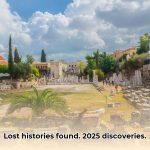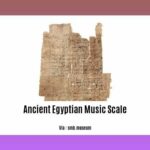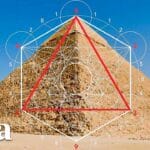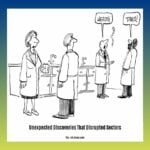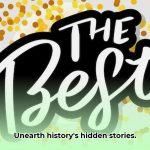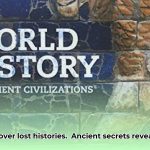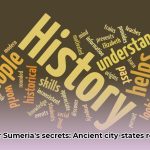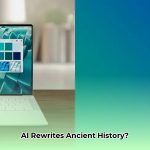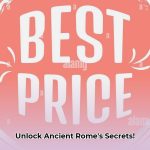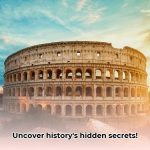Picking the perfect ancient history textbook can feel like searching for a needle in a haystack. There’s so much ground to cover, and new discoveries and interpretations are always popping up. This article isn’t just a book report; it’s a deep dive into what makes a *great* ancient history textbook. We’ll look at some common pitfalls, compare different approaches, and even show you how to choose a textbook that will stay relevant for years to come. Whether you’re a student cramming for exams, a teacher building a syllabus, or just someone fascinated by the past, this guide will help you find the best resource for understanding the amazing interconnected world of ancient civilizations. For more book recommendations, check out this helpful list of [ancient history books](https://www.lolaapp.com/best-ancient-history-books/).
Ancient World History Textbook: A Deeper Dive into Civilizations
Unlocking the secrets of the ancient world is a thrilling journey, and a good textbook is your essential map and compass. But what makes an amazing ancient world history textbook that promotes comprehensive learning? It’s more than just names and dates; it’s about connecting the dots between different civilizations, understanding their unique stories, and seeing how they all fit into the bigger picture of human history. We’re moving beyond the old-fashioned approach of focusing only on kings and queens. Today’s best textbooks bring the lives of ordinary people to the forefront, showing us what everyday life was truly like thousands of years ago, promoting a humanistic approach to history.
This modern approach needs to employ a variety of tools and perspectives. Imagine archaeologists carefully digging up ancient cities, historians poring over ancient texts, and anthropologists studying the ways people lived. Putting all these together gives us a much richer, more complete picture than any single source could offer. It’s a dynamic process, and it’s what makes the study of ancient history so engaging, even while presenting some pretty significant challenges.
Navigating the Known and the Unknown in Ancient History
There’s a lot we can confidently say about the ancient world. For instance, geography mattered a whole lot. Where a civilization was located shaped its culture, its economy, and even its political structure. And, to build a solid understanding, we need evidence from various sources – it’s like solving a puzzle with many different pieces. We need to cross-check information from multiple sources to get a clearer, more accurate picture to foster source criticism skills.
However, many things are still up for debate among experts. For example, how much weight should we give to the actions of famous leaders versus the everyday experiences of regular people? Ancient texts themselves can be tricky. They might be biased, incomplete, or even purposely misleading. We need to be critical thinkers and examine these sources carefully. “Ancient texts were products of their time, influenced by the writer’s biases, political context, and cultural norms,” said Amanda H. Podany, Professor of History at California State Polytechnic University, Pomona, whose work emphasizes the lives of ordinary people in the ancient Near East.
We also face challenges in separating facts from myths and legends. Archaeology is constantly advancing but still can’t always give us a complete picture. This is further complicated by enormous variations in the amount and quality of information we have. Some areas have mountains of historical records while others have practically nothing. This is something any good ancient world history textbook needs to take into account, especially when discussing lesser-known societies.
Textbook Strengths and Shortcomings: A Balanced Look at Historical Accuracy
A truly excellent ancient world history textbook acts as a mirror to on-going scholarly discussions. It should cover both the established facts and the ongoing debates. Here’s what we should look for:
Strengths of a Great Textbook:
- A Multi-Disciplinary Approach: A good textbook uses information from various fields – archaeology, literature, anthropology, etc. – to provide a holistic view of ancient cultures (the “holistic” approach).
- Diverse Voices: It gives a voice to ordinary people, not just rulers and elites. It explores the lives of various social groups, adding layers of understanding to cultural complexities.
- Critical Thinking: It highlights the limitations and potential biases present in ancient sources. It encourages readers to think critically about the material and scrutinize conventional historical narratives.
Weaknesses to Watch Out For:
- Uneven Coverage: Some textbooks might focus too much on certain regions or civilizations while neglecting others, leading to an unbalanced perspective and skewed world history understanding.
- Oversimplification: Complex historical debates can be simplified or presented in a way that avoids the nuances of differing interpretations, undermining comprehensive insight.
- Lack of Engagement: A dull textbook can make ancient history seem boring. A good textbook makes learning fun and draws the reader in, promoting active historical learning.
Who Benefits from a Superior Textbook for Ancient History Education?
A well-crafted ancient world history textbook isn’t just for students; it benefits a range of people by providing accessible historical knowledge:
| Stakeholder | Short-Term Benefits | Long-Term Implications |
|---|---|---|
| Historians/Researchers | access to diverse interpretations and methodologies | improved research approaches, fostering interdisciplinary collaboration |
| Educators | improved teaching methods, diverse learning materials | enhanced student understanding, development of critical thinking skills |
| General Public | improved understanding of ancient history | greater global citizenship, increased appreciation of human history |
The Future of Ancient World History Textbooks and Historical Scholarship
The perfect ancient world history textbook is a moving target. New discoveries, breakthroughs in archaeology, and ongoing scholarly debates mean constant evolution is essential. A truly great textbook will continue to adapt to keep pace with advancements in the field, incorporating the latest findings and offering multiple perspectives while examining historical trends. Most importantly, it should inspire us all to delve deeper into the fascinating tapestry of our shared past. As Susan Wise Bauer, historian and author of “The History of the Ancient World” says, “The point of history is to learn about people. The more you know about other people, the better you are at understanding the world.” What features do you think are crucial in a top-notch ancient world history textbook that presents history dynamically?
How to Reconcile Conflicting Narratives in Ancient History and Historical Interpretation
Key Takeaways:
- Ancient societies, despite differences, shared common struggles with war and peace, showcasing universal human experiences.
- Motivations for war were complex, ranging from territorial gains to religious beliefs, revealing multifaceted historical drivers.
- Peace was achieved through various methods, from diplomacy to religious practices, highlighting diverse conflict resolution measures.
- Defining “peace” itself varied across cultures, some emphasizing the absence of war, others internal harmony, reflecting cultural value differences.
- Existing peace wasn’t static; it required constant effort and faced disruptions, underscoring fragility and dynamism of peace.
- How to reconcile conflicting narratives in ancient history requires examining diverse sources and perspectives for nuanced understanding.
- Understanding the context in which historical accounts were created is crucial for interpretive accuracy.
- Analyzing biases and motivations of ancient writers and modern historians is essential for impartial historical analysis.
Unpacking the Past: A Multifaceted Approach to Historical Analysis
Let’s journey through ancient history, where narratives often clash. Think of it like piecing together a shattered mosaic; each fragment offers a piece of the truth, but the complete picture remains elusive until we assemble them carefully. How do we bridge these gaps in historical knowledge? It’s a challenge, but not insurmountable.
One crucial step is understanding the sources. Ancient texts were products of their time, influenced by the writer’s biases, political context, and cultural norms. Therefore, we must analyze the writer’s background and motivations. Was it a royal decree, a battlefield account, or a philosophical treatise? Each has its own slant, showcasing unique perspectives and intents. As Eric Cline, Professor of Classics and Anthropology at The George Washington University, notes, “The past is a foreign country; they do things differently there.”
Next, we must consider multiple perspectives to attain a holistic view of historical events. Rarely does a single source offer a complete, objective account. Comparing and contrasting accounts from different cultures, regions, and social classes allows us to see a richer, more nuanced picture of ancient civilizations. Think of it as listening to multiple witnesses in a trial—each provides a piece of the story, but by comparing their testimonies we gain a more complete understanding of events, fostering critical triangulation of information.
Reconciling Contradictions: Strategies for Synthesis and Historical Accuracy
Here’s where things get interesting, especially when examining primary sources. Sometimes sources directly contradict each other, offering conflicting accounts of the same event. This is where critical thinking comes into play. The goal isn’t to pick a “winner” but to understand the reasons for the discrepancies.
- Identify biases: Consider the author’s background, political affiliations, and potential motives for specific narrations. A victorious general’s account of a battle might differ significantly from a defeated soldier’s, illustrating contrasting lived experiences.
- Evaluate evidence: Don’t just accept statements at face value. Look for supporting evidence or corroborating accounts that validate specific claims. Archaeological findings, for instance, can sometimes provide independent verification of historical narratives.
- Consider context: Historical events rarely happen in a vacuum. Understanding the broader social, political and economic context can help explain seemingly contradictory accounts, promoting a holistic view of historical causality.
The Role of Interpretation: Bridging the Divide in Historical Understanding
Even with seemingly solid evidence, interpretations can vary, especially with shifting cultural paradigms. Modern historians often bring their own biases and theoretical frameworks to the study of the past. How to reconcile conflicting narratives in ancient history requires acknowledging this interpretive element, and recognizing subjectivity in history examination. Recognizing these differences is key to understanding the evolution of historical scholarship, promoting reflexive awareness among historians. As Mary Beard, Professor of Classics at the University of Cambridge, reminds us, “History is always a negotiation between past and present.”
Moving Forward: A Holistic Approach to Ancient Civilization Studies
The quest to understand the ancient world is an ongoing journey, not a destination. By acknowledging the complexity of historical sources, employing critical thinking skills, and engaging with multiple perspectives, we can create more complete and nuanced understandings of the past, enriching our historical knowledge. This involves appreciating the diverse approaches to conflict resolution and the fluid nature of peace itself, recognizing it not as a static condition, but a dynamic equilibrium constantly negotiated and renegotiated. This approach allows us to move beyond simplistic narratives and uncover the richness and complexity of ancient societies’ experiences with war, peace, and everything in between, fostering a comprehensive understanding of ancient civilizations.
Mastering Ancient Civilizations Through Effective Textbook Selection Strategies and Historical Analysis
Key Takeaways:
- Access to digital ancient history resources varies widely, impacting ease and breadth of research. Quality and legality are significant concerns affecting reliability and ethical usage.
- Mastering Ancient Civilizations Through Effective Textbook Selection Strategies requires careful evaluation of sources and assessing their credibility.
- Educators, students, and publishers all have roles to play in improving resource access and quality, promoting collaborative empowerment.
- Copyright law’s impact on digital textbook availability is complex and needs clarification, requiring informed navigation of legal ecosystems.
Navigating the Digital Landscape of Ancient History Texts and Scholarly Resources
Finding the right ancient history textbook can feel like searching for a specific artifact in a vast museum, especially in the information age. The sheer volume of digital resources – both good and bad – can be overwhelming. How do you sort through the endless stream of online offerings and choose textbooks that are both accurate and engaging while promoting effective digital literacy? Mike Duncan, author and historian, emphasizes the importance of source evaluation: “The most important thing you can do as a reader of history is to ask, ‘Where did this information come from?'”
Many websites offer free downloads, some containing classic texts in the public domain, providing valuable resources. However, the legal waters are murky. Accessing copyrighted material from unofficial sources is risky and legality varies across jurisdictions, risking copyright infringement. This necessitates discernment. Do you take the risk of using a possibly illegal copy? Or do you opt for a verified, but possibly expensive, resource?
Evaluating Textbook Quality and Accuracy in Scholarship
The quality of free online textbooks is inconsistent, impacting reliability and learning outcomes. Some are superb, meticulously researched, and engagingly written, offering comprehensive knowledge. Others? Not so much. Inconsistent quality necessitates critical evaluation. How can you assess the accuracy of a textbook, especially a free one, ensuring dependable knowledge acquisition?
Look for author credentials. Are they established scholars in their field? Do they have relevant academic background or professional experience validating expertise? Check reviews. Are there testimonials from other educators or reputable sources attesting to reliability? Cross-reference information with other reliable sources to validate findings and prevent misinformation. Don’t rely solely on one resource to avoid potential biases and factual inaccuracies. As Lloyd Llewellyn-Jones, Professor of Ancient History at Cardiff University, suggests, “Always question the source, look for corroboration, and be wary of any single narrative.”
Choosing Textbooks for Different Needs in Historical Education
Different textbooks are suited to different needs, requiring alignment with specific learning goals. A textbook for a university-level course will differ significantly from one designed for high school students, matching respective academic demands. Consider your audience – are you teaching university students, high-schoolers, or simply curious members of the public? The appropriate level of detail and complexity will vary, enhancing learning effectiveness.
Also consider the textbook’s approach to history. Does it emphasize primary sources to promote direct engagement with historical material? Does it engage with current scholarly debates, fostering critical analysis and nuanced understanding? A good textbook should not only present information but also encourage critical thinking that strengthens analytical competence. That’s key to a truly effective learning experience, boosting knowledge retention and application.
The Role of Libraries and Educational Institutions in Safeguarding and Historical Knowledge
Libraries and educational institutions play a crucial role in providing access to quality resources and promoting lifelong learning. These institutions frequently subscribe to databases containing credible, peer-reviewed materials that ensure accuracy and reliability. Their collections often include both physical and digital textbooks, accommodating diverse learning preferences. They may even offer workshops on evaluating online resources, fostering information literacy and critical thinking. Take advantage of these resources that help in navigating complex information ecosystems. They provide a vital safeguard against unreliable material, ensuring access to credible knowledge.
The Future of Ancient History Textbooks and Educational Resources
The future of ancient history textbooks involves a collaborative effort across different stakeholders and sectors. Publishers need to explore diverse online distribution models, including Open Educational Resources (OER) that promote accessibility and affordability. Educators can contribute to OER development, creating high-quality, accessible texts, enhancing educational equity. Students can engage in these projects, fostering active participation and ownership of learning materials. Government agencies can support the creation and dissemination of these resources, ensuring broad accessibility and promoting knowledge advancement.
The ideal solution involves a combination of readily available free materials (carefully checked) and curated subscription services that maintain quality control, ensuring content reliability. This requires a multi-faceted approach that integrates different strategies and solutions effectively. It necessitates improved digital literacy education equipping individuals with skills to navigate online information. It demands clearer copyright regulations, providing legal certainty and balancing creator rights. It requires increased collaboration across sectors, enabling resource sharing and collective progress.
Curriculum Enhancement: Integrating Diverse Perspectives in Ancient World History and Promoting Inclusive Education
Key Takeaways:
- Incorporating diverse viewpoints significantly enhances student engagement and critical thinking, promoting inclusive learning environments
- Challenges exist in implementing inclusive teaching methods, including resource limitations and potential resistance, requiring strategic solutions and careful planning.
- A shift from chronological to multi-perspective analysis is crucial for effective Curriculum Enhancement: Integrating Diverse Perspectives in Ancient World History, promoting broader historical understanding.
- Utilizing primary sources from various cultural backgrounds is key to revealing hidden narratives and amplifying marginalized voices in history.
- Effective implementation requires teacher training and open communication with parents and students, fostering collaborative and supportive educational ecosystems.
Rethinking Ancient History: Beyond Eurocentric Narratives and Conventional Interpretations
Let’s face it: traditional ancient history textbooks often present a biased, Eurocentric view that overlooks global historical narratives. We’ve all read accounts that focus primarily on the achievements of the Greeks and Romans, neglecting the rich tapestry of other civilizations, diminishing contributions of entire cultures. But what if we could unlock a deeper understanding by incorporating diverse perspectives, building a comprehensive global historical viewpoint? This is more than just adding a few mentions of other cultures; it’s about fundamentally reshaping our approach to the subject, promoting inclusive and representative education.
How can we achieve a more nuanced, inclusive understanding of the ancient world, ensuring diverse narratives are integrated? It starts with Curriculum Enhancement: Integrating Diverse Perspectives in Ancient World History by actively seeking out alternative narratives that challenge conventional viewpoints. Think of it as assembling a jigsaw puzzle; the traditional textbook gives you only one corner, presenting an incomplete image. We need to find the missing pieces, filling in the blanks of an incomplete narrative, promoting a wholistic historical tapestry. We need to move beyond the “Great Man” approach, and incorporate a focus on the average experiences of the peoples throughout ancient civilizations. Annalee Newitz, science journalist and author, argues that understanding diverse urban experiences is key: “Cities are shaped by the people who live in them, not just the rulers.”
The Power of Primary Sources in Illuminating Diverse Historical Experiences
One vital step is integrating primary sources from diverse cultural backgrounds into the curriculum, promoting direct engagement with historical material. Instead of relying solely on secondary interpretations filtered through a Western lens, let’s delve into the actual voices from the past, providing authentic and intimate perspectives. Imagine reading Mesopotamian hymns, Egyptian tomb inscriptions, or the writings of women from the Roman Empire, providing varied angles and personal accounts. Primary sources provide a window into the daily lives, beliefs, and perspectives of people who often remain silent in typical accounts, amplifying the muted voices of history.
By using these primary sources, we can challenge preconceived notions that are rooted in cultural partiality. We begin to gain a more comprehensive understanding of ancient societies which enhances historical accuracy. The impact on student learning is powerful, boosting critical thinking abilities. They not only learn facts but also develop crucial analytical skills, fostering holistic learning. Can you see the transformation occurring in knowledge acquisition and understanding?
Overcoming Obstacles in Promoting Inclusive Historical Education
The path toward a more inclusive curriculum isn’t without hurdles that require strategic planning and coordinated resolution. One obvious challenge is the scarcity of readily accessible resources depicting diverse ancient perspectives which is a large detriment to historical education. Another is the resistance to change from those accustomed to traditional narratives, and the need for comprehensive teacher training, limiting the overall adaptation. But isn’t a richer, truer history worth the effort, even when faced with challenges?
Think of it like baking a cake; you can start with a basic recipe, but to make it truly delicious, you need to experiment with different ingredients and techniques, enhancing its overall flavor. Here, the ingredients are diverse perspectives and the techniques are inclusive teaching strategies which improve overall quality of learning. Kara Cooney, Professor of Egyptian Art and Architecture at UCLA, highlights the importance of challenging assumptions: “Question everything you think you know about the past.”
Building a Better Future Through Inclusive Historical Education
The ultimate goal is not just to correct past inaccuracies but to foster better global citizens equipped to understand diversity. By understanding the complexities and nuances of ancient societies, students develop empathy, critical thinking, and a sharper awareness of historical biases, fostering a more just and equitable society. This benefits students, educators, and society, enriching overall community knowledge and understanding.
What are the practical steps for enhancing educational outcomes? We need to create and disseminate resources representing diverse voices that facilitate broader historical comprehension. We must engage in professional development, and, importantly, we need open communication with our students and their families, promoting a collaborative learning environment. The task is considerable, but the rewards are immeasurable, fostering overall improvements in global awareness.
National Humanities Center Article
- Discover the Best Ancient History Books: A Guide to Inclusive Narratives - August 6, 2025
- Unlock Ancient World History Textbook:A Deeper Understanding - August 6, 2025
- Discover History Alive Ancient World: Sumerian Rise to City-States - August 6, 2025

